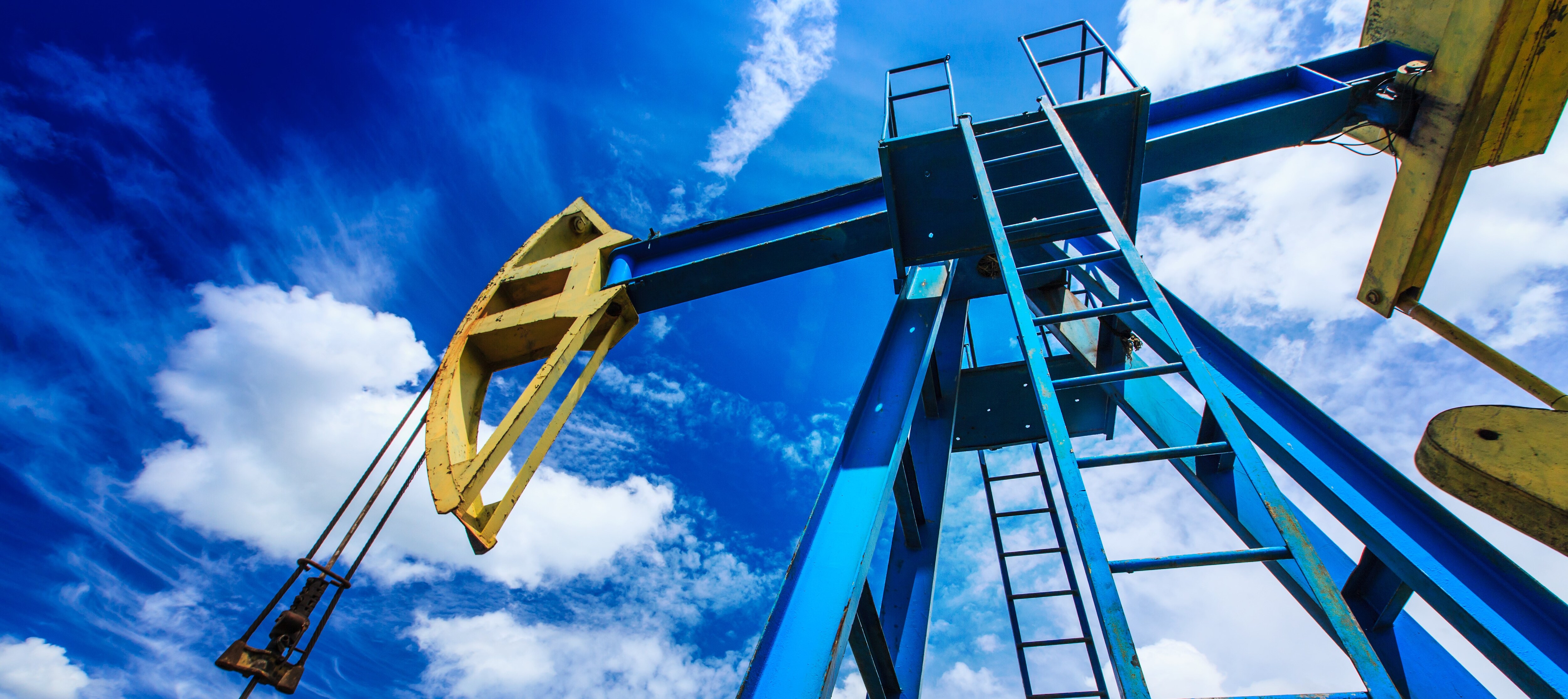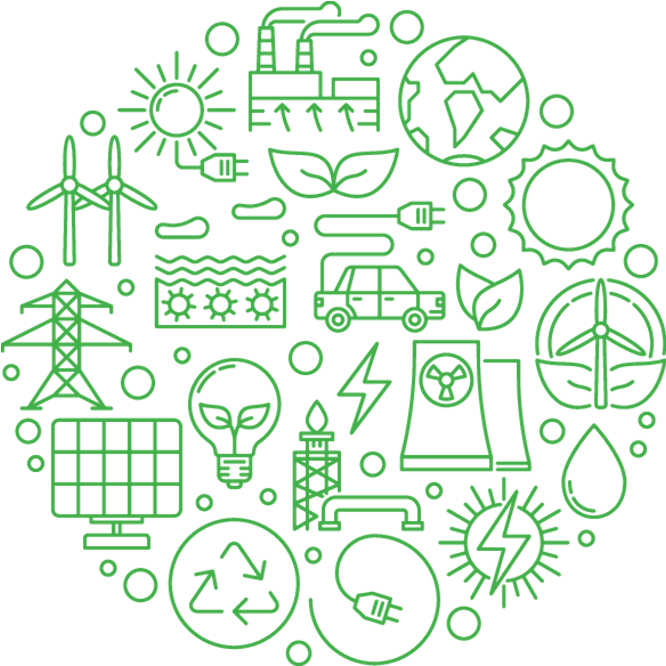Deloitte's Energy Transition Monitor
Energy transition at a crossroads
A Deloitte Netherlands publication
September 2023

Introduction
The energy transition is arguably the most challenging undertaking of this generation. The Netherlands has made good progress, so far, but the country has come to a crossroads. Most of its progress has come from picking the low-hanging fruit, and reducing industrial output, but to achieve the emission goals for 2030 and beyond, fundamental choices need to be made around the structure of the Dutch economy and the energy system that enables it. With its excellent offshore wind potential, the long-established industrial sector, and a leading education system, the Netherlands is well-placed to create a global blueprint for a successful energy transition.
To make the right choices, industry professionals, academics and policymakers need a clear view of the progress the Netherlands has made. The Energy Transition Monitor provides this view by assessing the current progress, but it also shows what is lying ahead. It does so by combining statistical data from Statistics Netherland and Eurostat, and interview insights.
If we can't make it happen in the Netherlands, where will we?
0

Monitoring our emissions
The energy transition is more than just a quest to reduce
megatonnes
The scope of this report is national energy-related emissions,
therefore it excludes agriculture and land use. Emissions from
international aviation and shipping as well as emissions attributed
to imported good and semi-finished products do not count towards
official national emission figures. However, they are noted here
because they do have a connection to Dutch economic and social
activity. To give an indication of the size of these emissions:
non-national emissions are roughly the same size as national
emissions.
Energy-related emissions accounted for the majority of Dutch
GHG emissions, and have decreased by 32% since 1990, to a total of
128 Mt CO₂ eq (0.4% of global energy-related emissions).
Emissions from international aviation and shipping have grown since 1990, to an additional 45 Mt in 2022. This means that when also accounting for international aviation and shipping the decline was only 24%.
Apart from these emissions, the Netherlands is accounting for emissions outside of the energy system, i.e., from agriculture and land use, which added another 27 Mt in 2022 but are outside of the scope of this report.
Emissions from international aviation and shipping have grown since 1990, to an additional 45 Mt in 2022. This means that when also accounting for international aviation and shipping the decline was only 24%.
Apart from these emissions, the Netherlands is accounting for emissions outside of the energy system, i.e., from agriculture and land use, which added another 27 Mt in 2022 but are outside of the scope of this report.
The decrease of 32% in GHG emissions of the energy system (in green) is
relative to the binding target for national emissions, set by the Klimaatakkoord
(and in the Dutch national climate law). In the Klimaatakkoord societal stakeholders
agreed to reduce emissions by 49% by 2030 (i.e., excluding international aviation and shipping)
compared to 1990 levels.
This means that the energy sector has a target of 92 Mt CO2 eq emissions for 2030.
To achieve this target the Netherlands must reduce another 37 Mt CO2 eq emissions (-28%)
in the energy system in the next
seven years – quite a bit faster compared to the average reduction of 20 Mt per decade that were
achieved so far.
The industry sector was the largest emitter, and has achieved the
greatest reduction in emissions, from 87 to 48 Mt CO₂ eq (-44%)
since 1990. Reductions in the national mobility (-11%), electricity
(-22%) and built environment (-35%) sectors have been more modest.
In terms of the reductions required to meet the 2030 emission
targets, electricity and built environment have the most reductions
to make (26% and 28%, respectively) in the next seven years.
Taking a closer look at the industry sector: in 2022 industry was
responsible for 38% of all emissions,
of which manufacturing accounted for 85% of industrial emissions,
most of which arose from the production of chemicals (48%).
Although manufacturing emissions have declined significantly since
2000 (earlier data not available), this mainly reflects a decline
in production output.
In fact, 80% of the drop in emissions came from reducing
production, while only 20% of the emission reductions were the
result of reducing carbon intensity. Carbon intensity is a measure
of GHG emissions relative to economic output and indicates a real
transition to greener production.
Select to change view:
In fact, of the four areas of production that created the highest emissions, only non-metallic minerals have seen a decline in carbon intensity, as emissions declined faster than output.
In fact, of the four areas of production that created the highest emissions, only non-metallic minerals have seen a decline in carbon intensity, as emissions declined faster than output.

Monitoring our energy
We need bold, emergency measures instead of the
business-as-usual roadmaps, which are vague and slow
In 2022, the system still relied heavily on fossil fuels (oil, natural
gas, and coal), which had a share of 87% in the primary energy that was
used by the energy sector. The majority was consumed in the form of
molecules, e.g., natural gas for heating, or fuel products for
mobility. The share of renewable energy in total final consumption was
15% in 2022. Industry was the highest-consuming sector, using
approximately 40% of all energy produced. Given the high use of gas and
oil products in the built environment and mobility respectively,
focusing on these two consumption segments could drive considerable
positive impact.
A closer look at Dutch energy consumption shows that 68% of Dutch energy consumption still
originated from molecules (e.g., gasoline, diesel, natural gas) and
other non-electrons (e.g., heat) whose combined share has declined only
slowly, from 79% in 1990.
However, electricity represented only 23% of Dutch final energy consumption in 2022.
This share has shown a limited increase over the past decades (14% in 1990),
which was driven partially by advances in electrification such as EVs or heat pumps.
Primarily, the increase has been slow because industrial processes still need to be electrified.
Renewable sources are growing rapidly with biomass being the
dominant renewable energy source with 40% in 2022. Solar and wind
grew in recent years and contributed 28% and 22% to renewable
energy respectively.
Electrification is an important lever to reduce emissions, given
renewable electricity technologies (solar and wind) have become
commercially viable and much more widespread. However,
electrification has only started in niches which is aligned with
the small increase in the share of electricity as shown earlier.
Electrification in the Dutch mobility sector, for example, is still
very low, and represented only 3% of the sector's energy
consumption in 2022. EVs contributed only 1.5% to the sector's
energy use. The use of biomass in mobility was larger with a share
of 6%, due to the blending mandates of biofuels.
Historically, the Netherlands has always imported its oil and coal,
but produced enough natural gas for both its own needs and for
export.
When the Groningen gas was decommissioned in 2013, natural gas
production declined, and exports stopped.
With the closure of the Groningen gas field, the Netherlands is
quickly and structurally changing from a gas exporting country to
an importer. To ensure energy security in the Netherlands, the
national infrastructure had to be adjusted: and projects such as
the Energiebuffer, Zuidwending and EemsEnergyTerminal helped secure
and integrate the imports of liquefied natural gas. The greater
reliance on imports represents a risk for the energy security of
the Netherlands, which must be considered in the next stage of the
energy transition. Fortunately, the Netherlands is well-positioned
to regain energy independence and security due to its large
investment in renewables.

Monitoring our investments
Investment in new technologies and projects is the best
indicator to anticipate the coming shift
Household adoption of clean technology is growing fast,
particularly in EVs, heat pumps and solar panels. On average one in
three households in the Netherlands (or about 2.7 million
households in total) is using at least one clean energy technology.
In particular, one in four have solar panels, 7% drive an EV and 5%
have a heat pump. Although household spending has less financial
significance than private or government investment, this figure
suggests that (at least some parts of) the public are keen to
support the transition to clean energy.
Strong growth in clean energy production is expected in the coming
years, starting from a robust base in clean electricity.
Large capacity additions are expected in hydrogen production and offshore wind energy.
Looking beyond 2030, the government has increased targets to 20 GW
hydrogen capacity (2040), 70 GW offshore wind energy (2050) and 3.5
to 7 GW nuclear (2050).
The capex required to realize these ambitions, using typical
figures is substantial: most capital will be allocated offshore for
wind projects (~€80 billion), followed by green hydrogen (~€20
billion).

Deloitte perspective
10 bold ideas

The Dutch energy transition has made good progress in many parts of the energy system. However, the decisions that are made in the years ahead will fundamentally change the way of life and economy in the Netherlands and determine whether the country will reach the goal of net zero by 2050.
There is much work to do in a short time, but the Netherlands has the right elements to do it well, with a mature economy and regulatory environment, a well-educated workforce, a culture of innovation and the willingness to invest in its future. The challenge now is how to orchestrate these capabilities in new ways, to accelerate the transition, protect energy security, and benefit society and the economy.
Deloitte has developed 10 bold ideas to accelerate the energy transition:
Scope of the Energy Transition Monitor

The energy system is the dominant source of emissions
GHG emissions in the Netherlands (Mt CO₂ eq)
Energy system emissions decreased by 32%
NL GHG-emissions (Mt CO₂ eq)
Industry has reduced emissions almost by half
GHG emissions by sector (Mt CO₂ eq)
Manufacturing accounts for 85% of industrial emissions
GHG emissions per (sub-)sector (%, NL, 2022)
Two forces at play: emission and production output reduction
Development of economic output and GHG emissions (indexed)
Only non-metalic minerals show decline in carbon intensity
NL GHG emissions per sub-sector (indexed)
Share of electricity consumption increased to 23%
Energy consumption by carrier (PJ, NL, 2022)
Biomass is the dominant form of renewable energy
Consumption of renewable energy by source (PJ, NL)
Emissions
The Netherlands is halfway towards meeting its 2030 emissions target, but
only 7 years remain to close the gap. The mobility sector has made
least progress in terms of emissions reduction since 1990,
especially when international aviation and shipping are included, while
industry has made greatest progress, and almost halved its total greenhouse gas (GHG)
emissions.
However, industry does not show signs of a real transition yet; most reduction has been in the non-CO₂ greenhouse gasses and by reducing output versus decreasing the carbon intensity of the produced products. Therefore, Dutch industry faces important choices that must balance greener domestic production with suitable import policies, to achieve the right outcomes for the economy, society, and planet.
However, industry does not show signs of a real transition yet; most reduction has been in the non-CO₂ greenhouse gasses and by reducing output versus decreasing the carbon intensity of the produced products. Therefore, Dutch industry faces important choices that must balance greener domestic production with suitable import policies, to achieve the right outcomes for the economy, society, and planet.
Energy
The Dutch energy system is undergoing fundamental changes.
Historically, energy consumption relied on molecular sources such as oil and gas, but this share is decreasing. In 2022 renewables represented a 15% share in the energy consumption. Biomass remained the main source of renewable energy, but wind and solar are growing rapidly.
With a 40% share of electricity coming from renewables, the Dutch electricity system is the greatest success in the energy transition, so far. However, integrating renewables must go hand in hand with electrifying a larger share of the energy system, which has started, but it is only happening in niches.
Historically, energy consumption relied on molecular sources such as oil and gas, but this share is decreasing. In 2022 renewables represented a 15% share in the energy consumption. Biomass remained the main source of renewable energy, but wind and solar are growing rapidly.
With a 40% share of electricity coming from renewables, the Dutch electricity system is the greatest success in the energy transition, so far. However, integrating renewables must go hand in hand with electrifying a larger share of the energy system, which has started, but it is only happening in niches.
Investments
Investments by households, companies and government give a good sense of
where the energy transition is heading. Household investment in clean energy technologies is growing
fast. Private sector announcements
also look promising, with a shift from inland to offshore projects.
Government investment has, to date, been mainly in electricity generation,
but a growing focus on molecular energy can be observed, along with
increasing investment in the infrastructure for energy distribution.
The energy system is still reliant on fossil fuels
The Dutch energy system (PJ, 2022)
Dutch households are investing in clean energy technology
Share of Dutch households using (selected) clean energy technologies (%, NL)
Share of electricity in mobility is still marginal
Share of energy consumption by sector and carrier (%, NL, 2022)
The Netherlands transformed into a net importer of natural gas
Import-export balance of energy (PJ, NL)
Private investments: moving from onshore to offshore
Operational, announced and target capacity in clean energy technologies (NL, March 2023)
Our situation today in 3 charts
The state of progress of the energy transition in the Netherlands can
be summarized in three metrics: GHG emissions reduction, share of
renewable energy and investment in clean tech. Energy-related
greenhouse gas (GHG) emissions have decreased by 32% from 1990 to 2022.
In 2022, renewable energy made up 15% of total final energy
consumption, compared with only 1% in 1990. Dutch households are
investing at an increasing rate in clean energy technologies: on
average one in three households uses at least one clean energy
technology.
Reduction in emissions
 In 2022, energy-related GHG emissions accounted for 83% of
national emissions in the Netherlands
In 2022, energy-related GHG emissions accounted for 83% of
national emissions in the Netherlands
 -32%
-32%
energy-related GHG emissions reduction (NL, 2022)
Sources of renewable energy
 The calculation follows the
calculation rules from the EU Renewable Energy Directive.
Breakdown for energy consumption by carrier is estimated
for the years '90-'97
The calculation follows the
calculation rules from the EU Renewable Energy Directive.
Breakdown for energy consumption by carrier is estimated
for the years '90-'97
 15%
15%
share of renewable energy consumption (NL, 2022)
Investments in clean technology
 Figure shows statistical average
but strong correlation to be expected; the range is between
25% and 37%
Figure shows statistical average
but strong correlation to be expected; the range is between
25% and 37%
 33%
33%
average share of households using at least one clean energy tech (NL, 2022)







